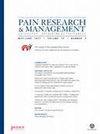经皮穴位电刺激治疗术后疼痛的疗效和安全性:随机对照试验的荟萃分析
IF 2.5
3区 医学
Q2 CLINICAL NEUROLOGY
引用次数: 10
摘要
目的评价经皮穴位电刺激(TEAS)治疗术后疼痛的有效性和安全性。方法本荟萃分析在PROSPERO注册(CRD42021286753)。我们检索了PubMed、Embase和Cochrane图书馆,检索了2021年11月之前发表的关于tea治疗术后疼痛的相关随机对照试验(rct)。主要观察指标为术后24 h内的视觉模拟评分(VAS)。次要结局包括术后24-72 h内阿片类镇痛药物用量及不良反应发生情况。不良反应包括头晕、恶心和呕吐。连续变量采用均差(md)或标准化均差(SMDs)和95% ci进行分析。二分类数据采用相对危险度(RR)和95% CI。采用RevMan 5.4、STATA15.0软件对数据进行汇总分析。结果纳入17项试验,1375名受试者。目前的结果表明,应用TEAS在降低VAS评分方面具有明显的优势(SMD = - 1.51, 95% CI = - 2.20 ~ - 0.82, I2 = 96%)。根据开放手术和微创手术进行亚组分析。术后24 h VAS评分下降(SMD = - 0.84, 95% CI = - 1.07 ~ - 0.6, I2 = 96%;Smd = - 0.88, 95% ci = - 1.02 ~ - 0.75, i2 = 96%)。术后24 ~ 72 h内,tea组患者术后头晕、恶心、呕吐发生率明显降低(RR = 0.48, 95% CI = 0.34 ~ 0.68, I2 = 0%;Rr = 0.66, 95% ci = 0.44 ~ 1.01, i2 = 69%;RR = 0.49, 95% CI = 0.24 ~ 1.00, I2 = 51%)。术后72 h内,tea组阿片类镇痛药物也减少(SMD =−2.10,95% CI =−3.37 ~−0.82,I2 = 96%)。结论tea可减少术后疼痛、头晕、恶心、呕吐的发生率及术后镇痛药的使用次数。tea是一种合理的方式,可纳入术后疼痛的多模式管理方法。本文章由计算机程序翻译,如有差异,请以英文原文为准。
Efficacy and Safety of Transcutaneous Electrical Acupoint Stimulation for Postoperative Pain: A Meta-Analysis of Randomized Controlled Trials
Objective This meta-analysis aims to evaluate the effectiveness and safety of transcutaneous electrical acupoint stimulation (TEAS) in treating post-operative pain. Methods This meta-analysis was registered in PROSPERO (CRD42021286753). We searched PubMed, Embase, and the Cochrane Library for relevant randomized controlled trials (RCTs) about TEAS in treating postoperative pain that were published before November 2021. The primary outcome was visual analogue scale (VAS) within 24 h after surgery. The secondary outcomes included postoperative opioid analgesic drug consumption and the occurrence of adverse reactions within the postoperative 24–72 h. Adverse reactions included dizziness, nausea, and vomiting. Continuous variables were analyzed using mean difference (MDs) or standardized mean difference (SMDs) and 95% CIs. Relative risk (RR) and 95% CI were used for dichotomous data. The data were pooled and analyzed by RevMan 5.4 and STATA15.0 software. Results Seventeen trials with 1375 participants were included. The current results suggested that application of TEAS showed obvious superiority in reducing VAS scores (SMD = −1.51, 95% CI = −2.20∼−0.82, I2 = 96%). Subgroup analysis was performed according to open surgery and minimally invasive surgery. VAS scores were decreased after surgery at 24 h (SMD = −0.84, 95% CI = −1.07∼−0.6, I2 = 96%; SMD = −0.88, 95% CI = −1.02∼−0.75, I2 = 96%). The incidence of postoperative dizziness and nausea and vomiting was significantly lower in the TEAS group within postoperative 24–72 h (RR = 0.48, 95% CI = 0.34∼0.68, I2 = 0%; RR = 0.66, 95% CI = 0.44∼1.01, I2 = 69%; and RR = 0.49, 95% CI = 0.24∼1.00, I2 = 51%). Postoperative opioid analgesics were also reduced in the TEAS group within 72 h after surgery (SMD = −2.10, 95% CI = −3.37∼−0.82, I2 = 96%). Conclusions TEAS can reduce postoperative pain as well as the incidence of dizziness, nausea, and vomiting and the number of analgesics used after surgery. TEAS is a reasonable modality to incorporate into a multimodal management approach for postoperative pain.
求助全文
通过发布文献求助,成功后即可免费获取论文全文。
去求助
来源期刊

Pain Research & Management
CLINICAL NEUROLOGY-
CiteScore
5.30
自引率
0.00%
发文量
109
审稿时长
>12 weeks
期刊介绍:
Pain Research and Management is a peer-reviewed, Open Access journal that publishes original research articles, review articles, and clinical studies in all areas of pain management.
The most recent Impact Factor for Pain Research and Management is 1.685 according to the 2015 Journal Citation Reports released by Thomson Reuters in 2016.
 求助内容:
求助内容: 应助结果提醒方式:
应助结果提醒方式:


